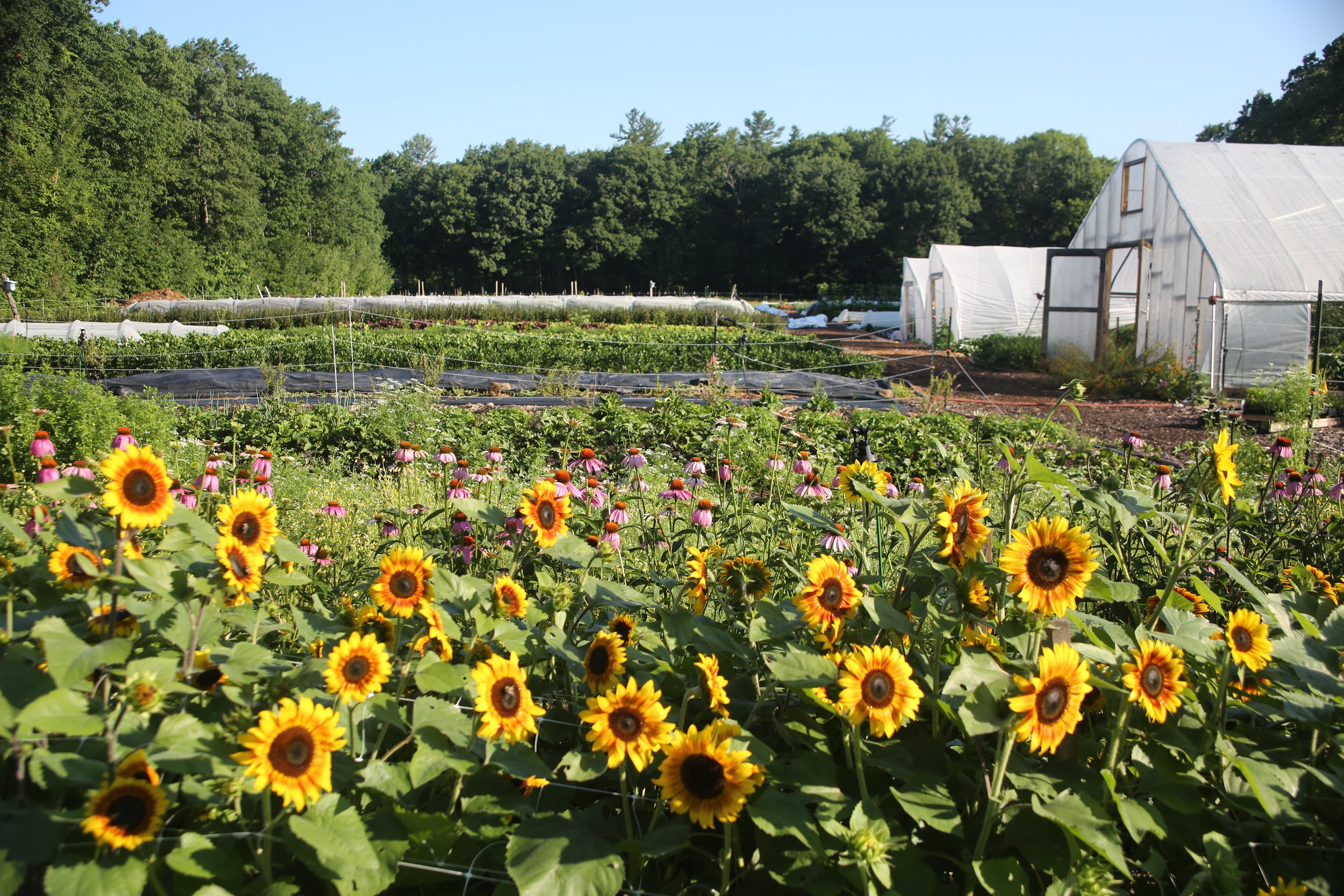About us
Rattle Root Farm is situated on a leased, six-acre field in Princeton, MA. We farm sustainably - meaning we try to work with the land to regenerate topsoil, improve biodiversity, and produce nutrient-dense food to feed our community.
Our stewardship of this land is a commitment to building relationships within our local community and ecosystem, and more broadly to our wider environmental and social contexts. We hope to responsibly and thoughtfully feed our neighbors and surrounding communities, work towards food equity, and create a space where our customers feel empowered to engage with how their food is grown.
Our story
Joey, Hannah and Peter all connected a few years ago while Joey and Hannah were living and working on a farm in the Berkshires. We share a collective curiosity and eagerness about agriculture, a zeal for cooking elaborate feasts, and an interest in having a beneficial impact on our local and collective food systems.
Our initial conversations inspired a search for land to farm all over Massachusetts. Joey, who grew up here in Princeton, came upon this field both by a stroke of good luck and through the kind support of our neighbors and the Princeton Land Trust. The land where we grow food is located on ancestral Nipmuc lands, and then in the 18th and 19th centuries was farmed by the Davis family. They built a cottage on the land, and though this cottage has since burned down, the foundations can still be seen today. The land was sold in 1870 to the Mirick family who have thoughtfully maintained the land and have supported our efforts to farm with a long-term lease. As we begin our farm, we are indebted to our wonderful support networks of mentors, farmers, families and friends.
The Origins of Rattle Root Farm
The name Rattle Root Farm is derived from the medicinal plant sometimes referred to as Rattle Root, and more commonly known as Black Cohosh. Rattle Root is native to eastern North America, and has historically grown prolifically throughout central Massachusetts, where it thrived on the edges of deciduous forests and open fields. This herb has long been used by indigenous people and herbalists as a remedy for all sorts of maladies including fever, cough, and pneumonia. Today it is more well known as a treatment for overall reproductive health, including menopause, fertility and hormonal balance.
Recently, this plant has become classified as an endangered species, as its growth in the area has been dramatically disrupted by ever-increasing development and the destruction of its native habitat. We hope to reintroduce Rattle Root to our farm in a way that will allow it to reestablish there as a perennial plant. More broadly, we intend to reintroduce native plant species to our farm, and to cultivate them both for medicinal purposes and for the many benefits they provide to native pollinator populations and the overall balance of our ecosystem. We hope that our farm name spurs on conversations about elements of our landscape that have been lost and how some of these fractures in our ecosystems might be mended.
On a personal note, Rattle Root Farm is a name that elicits some nostalgia for us. Hannah is originally from New Mexico and for her, the name has an association with a “rattlesnake,” reminding her of the hot mountain sun, warm rock faces, cool boulder crevices, and desert sagebrush.



